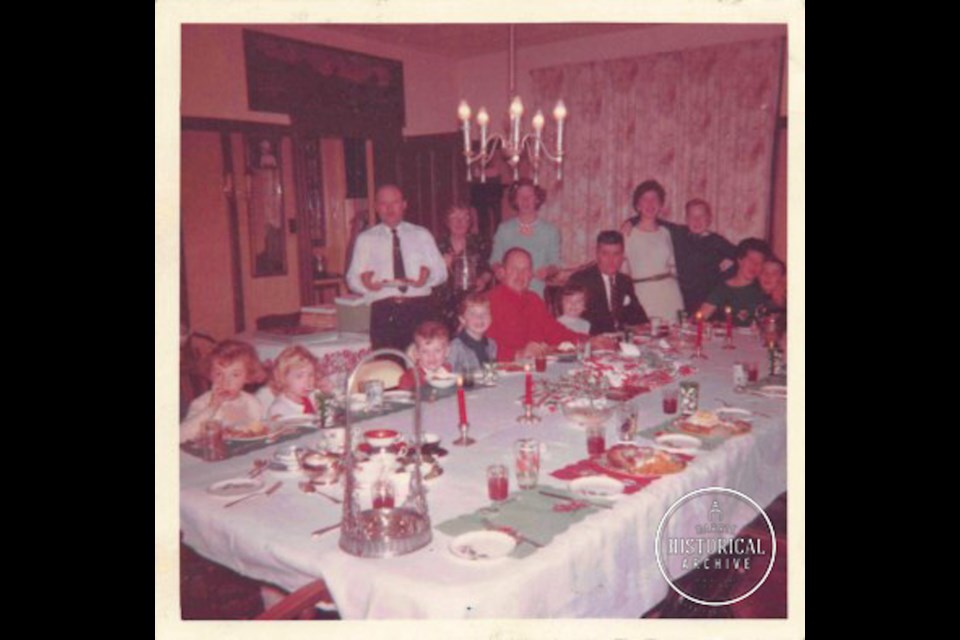“Was Santa good to you?”
How often did we hear those words? They usually accompanied Grandma’s tight squeezes as we all piled in her front door on Christmas Day. The familiar aroma of roasting turkey filled the air.
Coats were stacked high on a bed in the spare room as the adults settled down with a drink and a cigarette for a catch-up session with seldom-seen relatives. We children installed ourselves next to a Christmas tree that was more silver than green under its heavy mantle of tinsel. For us, it was all about the presents.
I had a pyjama aunt and an underwear aunt. Aunt Jessie could be counted on to supply us all with matching pyjamas, in different colours, from the Eaton’s store in Toronto where she worked. Aunt Amy, likely unbeknownst to her, provided a good deal of embarrassment on Christmas Day. One of my sisters cried every year as she unboxed her gift of unmentionables in front of everyone.
Earlier in the day, my immediate family would have opened our own gifts at home. Generally, we knew what we were getting as we had picked them out ourselves from the Sears Wish Book.
Mum and dad had set a 10-dollar limit on our gift choice. You know what was always priced over 10 dollars? That darned Easy Bake Oven! How badly I wanted that thing but I never did get one.
Early on though, I discovered that my father would spend any amount of money on a gift that he deemed sensible or educational. One year, I asked for a globe and he bought the best one he could find. It’s a bit dented now but I still have it.
Oh, that Sears Wish Book! Now that it’s gone, it has taken on somewhat of a mythical status. It was indeed a book of dreams to hopeful children in Canada.
It all started with Richard Warren Sears, a young man forced as a teenager to support his family after his once-wealthy father lost all of his fortune through bad investments and then died. While working with the railway in Minnesota, young Sears got stuck with a shipment of watches that were rejected by the intended recipient. He sold them all through the postal service, made a bundle of money and started his own mail-order company.
In just over five years, the business had exploded. The headquarters moved to Chicago where R.W. Sears produced a 507 pages catalogue, writing most of the copy himself. Sears also advertised widely.
In 1933, R.W. Sears was gone but the company that he built was thriving and could see that a Christmas catalogue, in addition to their semi-annual Big Book catalogue, would be a sure winner. The Christmas Book was created but almost immediately it became more commonly known by its nickname, the Wish Book or Book of Wishes.
It wasn’t until 1968 that the yearly Christmas catalogue was officially named the Wish Book. Just in time for my earliest memories of the book to begin.
The Wish Book’s Canadian roots lie with the Simpson’s Company. Robert Simpson, a 21-year-old Scottish grocery clerk, was not long in this country when he opened his own dry goods mercantile in Newmarket, Ontario. His initial success was stalled when an 1871 fire destroyed his shop. After that, Simpson moved his operation to Toronto.
By 1905, Simpson had expanded into mail order business and, in 1952, the American Sears-Roebuck company asked to partner with them in order to access the Canadian market. After this, the name Simpson-Sears appeared above shops and catalogue centres all over the country.
In the late 1970s, Simpson’s and Sears attempted to merge their linked but not unified company. Sears-Roebuck, the largest shareholder, was expected to form the new company. A last-minute offer by the Hudson Bay Company was successful but eventually the Bay sold out to Sears-Roebuck and Sears Canada was born.
Of course, Sears too has now disappeared from the retail landscape but good memories of that magical Wish Book remain.
